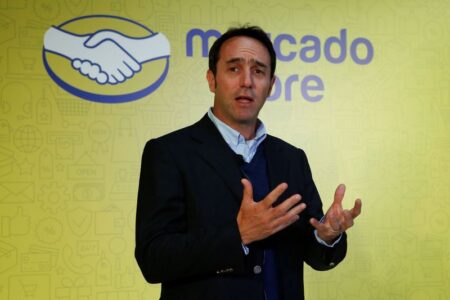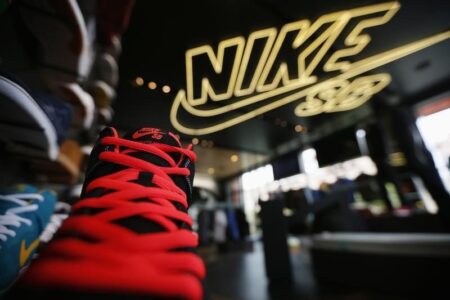CES Energy Solutions (OTC:) Corp. (ticker: CES), a provider of drilling fluids and production chemicals, has reported a significant uptick in its financial performance for the second quarter of 2024. The company announced record revenue of $553.2 million, marking a 7% increase from the previous year.
Adjusted EBITDA for the quarter stood at $95.4 million, reflecting a robust 17.3% margin. The positive results were accompanied by strategic moves, including the renewal of the company’s Normal Course Issuer Bid (NCIB) program, allowing for the repurchase of up to 19.2 million shares over the next 12 months.
Key Takeaways
- CES Energy Solutions achieved a record Q2 revenue of $553.2 million, a 7% year-over-year increase.
- The company reported a second-highest quarterly EBITDA of $95.4 million, with a 17.3% margin.
- CES’s US revenue hit an all-time high of $391 million, while Canada’s revenue reached a Q2 record of $162 million.
- The company plans to continue its share repurchase program and expects full-year cash CapEx of $75 million to $80 million.
- CES completed the acquisition of HydroLite LLC for approximately $15 million, which has been renamed AES (NYSE:) Completion Services.
- Total debt to adjusted EBITDA ratio improved to 1.12x, with debt decreasing to $405 million.
Company Outlook
- CES Energy Solutions is committed to paying quarterly dividends and investing in business growth through strategic acquisitions and debt repayment.
- The company is optimistic about future prospects, intending to expand its workforce and capabilities.
- CES is exploring new markets, including international opportunities and growth in the offshore sector.
Bearish Highlights
- The North American market is experiencing low growth, which poses challenges to significant market share gains.
- CES is still awaiting the closing of the Champion X deal, which could potentially impact its market position.
Bullish Highlights
- Positive performance in both the US and Canada, with market share increases and revenue growth.
- The acquisition of HydroLite LLC adds specialized chemistry and equipment for well-bore cleanouts and fracking to CES’s portfolio.
- CES’s focus on margin growth through cost optimization and supply chain improvements is expected to continue contributing to financial strength.
Misses
- CES has not made substantial market share gains from recent RFPs (Requests for Proposals).
Q&A Highlights
- Tony Aulicino discussed the company’s approach to M&A, indicating a preference for small, strategic acquisitions over large-scale deals.
- Aulicino confirmed the company’s intention to continue its share buyback program, targeting a valuation multiple in the range of sixes or sevens.
- Ken Zinger highlighted the company’s increased CapEx to meet potential short-notice supply demands and the focus on margin growth through various optimizations.
CES Energy Solutions plans to invest in its workforce and equipment, including trucks and reactors, to ensure timely product supply. The company’s focus remains on cost reduction through reformulations, new technologies, and volume-based discounts. Despite the current low-growth environment in North America, CES expresses confidence in identifying opportunities for margin expansion. The company looks forward to providing a Q3 update in November.
InvestingPro Insights
CES Energy Solutions Corp. (CESDF) has shown a remarkable financial performance in the latest quarter, and InvestingPro data adds further context to this success story. Here are some real-time metrics and InvestingPro Tips to consider:
- Market Cap: CESDF currently has a market cap of $1.31 billion, reflecting the company’s substantial size and relevance in its industry.
– P/E Ratio: With a P/E ratio of 9.4, CESDF is trading at a value that suggests affordability relative to its near-term earnings growth.
– Dividend Yield: Investors might also be attracted to the company’s dividend yield of 1.58%, especially considering CESDF has raised its dividend for 3 consecutive years and maintained payments for 19 consecutive years.
Incorporating these InvestingPro Tips into your analysis, it’s evident why CESDF could be an attractive stock:
1. The company is trading at a low P/E ratio relative to near-term earnings growth, indicating potential value for investors.
2. CESDF’s consistent dividend payments and recent increases demonstrate a commitment to returning value to shareholders.
For readers looking for a deeper dive into CES Energy Solutions, there are 12 additional InvestingPro Tips available, providing a comprehensive analysis for informed investment decisions. Check out the full list of tips at
The combination of CESDF’s strong financial results, strategic acquisitions, and consistent dividend payments, along with the InvestingPro insights, paints a picture of a company that is not only performing well but also showing characteristics that may appeal to a range of investors.
Full transcript – CES Energy Solutions Corp (CESDF) Q2 2024:
Operator: Good morning, everyone and welcome to the CES Energy Solutions Second Quarter 2024 Results Conference Call and Webcast. As a reminder, all participants are in a listen-only mode, and the conference is being recorded. After the presentation, there will be an opportunity to ask questions. [Operator Instructions] I would now like to turn the conference over to Tony Aulicino, Chief Financial Officer. Please go ahead.
Tony Aulicino: Thank you, operator. Good morning, everyone and thank you for attending today’s call. I’d like to note that in our commentary today, there will be forward-looking financial information and that our actual results may differ materially from the expected results due to various risk factors and assumptions. These risk factors and assumptions are summarized in our second quarter MD&A and press release dated August 8, 2024, and in our AIF dated February 29, 2024. In addition, certain financial measures that we will refer to today are not recognized under current General Accepted Accounting Policies. And for a description and definition of these, please see our second quarter MD&A. At this time, I’d like to turn the call over to Ken Zinger, our President and CEO.
Ken Zinger: Thank you, Tony. Welcome, everyone, and thank you for joining us for our second quarter 2024 earnings call. On today’s call, I will provide a brief summary of our impressive financial results released yesterday, followed by an update on capital allocation, and then our divisional updates for Canada and the U.S., followed by a summary of our recent tuck-in acquisition in Texas. I will then pass the call over to Tony to provide a detailed financial update. We will take questions, and then we will wrap up the call. I’ll start my comments today by highlighting some of the major financial accomplishments we were able to achieve in Q2 2024. These highlights include all-time record revenue for our Q2 of $553.2 million, beating the prior Q2 record set in Q2 of last year by 7%. Our second highest quarterly EBITDA ever of $95.4 million. Our highest Q2 EBITDA ever beating our prior Q2 record level set last year of $73.9 million by 29%. EBITDA margin of 17.3% versus 14.3% in Q2 of 2023, and 17.3% in the prior quarter. This result tied last quarter for the highest quarterly EBITDA margin achieved by CES in 9 years as we continue to focus on returns. We renewed the NCIB plan effective July 22, 2024, and this allows us to repurchase up to 19.2 million shares during the next 12 months, of which we have already purchased 1.5 million shares at an average of $7.90 per share. Free cash flow of $54.8 million during the quarter driven by the strong financial metrics noted prior. Total debt to trailing 12 months EBITDA dropped to a new low of 1.12x from 1.49x at the beginning of 2024 and 1.28x at the end of Q1. I now want to confirm that our capital allocation plans for 2024 remain the same as stated on the last call. We will continue to pay our quarterly dividend of $0.03 per share or approximately $28 million per year. We will continue to support the business with the necessary investments required to provide acceptable growth and returns. We will continue to look for strategic tuck in acquisitions opportunities into related business lines or geographies where we believe we can add value and grow returns. We have renewed our NCIB as of July 22 and based on our current outlook, we intend to once again purchase the maximum number of shares possible under the NCIB. We will continue to exercise the NCIB to its maximum threshold until we see a share valuation more aligned to our financial performance. We will use the balance of our remaining free cash flow to continue paying down debt to maintain leverage towards the lower end of the 1% to 1.5% debt to trailing 12 months EBITDAC range. I will now move on to summarize Q4 performance by division. Today, our rig count in North America stands at 203 rigs out of the 786 listed as running on land in North America, representing a market share of 27%, up from 23.6% at the time of the last call. In Canada, the Canadian Drilling Fluids division continues to lead the WCSB in market share. Today, we are providing service to 76 of the 220 jobs listed as underway in Canada over a 34.5% market share. The active drilling rig count in Canada so far in Q3, 2024 — sorry — Q2, 2024 is higher by approximately 15% year-over-year. We remain excited about the prospects for 2024 and 2025 and continue to anticipate that activity will be a little stronger during these years than was experienced in 2023 due to the completion and startup of infrastructure projects and their associated takeaway capacity. PureChem, our Canadian production chemical business had a very strong results once again in Q2. After a slow start to the quarter on the frac chemical space within PureChem, June came in stronger. All of the business lines within PureChem continue to grow as we have continued to take market share, win bids, optimize formulations and fine tune our supply chain. The revenue and earnings from our primary business production treating continue to accelerate in Canada as we consistently strive to deliver superior products and service combined with competitive market pricing. In the United States, AES, our U.S. Drilling Fluids Group is providing chemistry and service to 127 of the 566 rigs listed as active in the USA land market today for a continued number one market share of U.S. land rigs at 22.4%. The number of rigs drilling in the USA was slightly down again quarter-over-quarter by about 3%. But we continue to view this level as being at or near the bottom of the trough. We continue to enjoy a basin leading 98 rigs out of the 303 listed as working in the Permian Basin, equating to our market share in this basin of 32.3%. The Permian industry rig count is down 4% from the time of our last call. That said, service intensity continues to demonstrate its presence in our numbers per AES, as our revenue per day per rig continues to rise with more footage being drilled each day along with more complicated chemical solutions and service being provided due to the complexity and length of the horizontal sections. We see this trend continuing for the foreseeable future on both sides of the border. Finally, Jacam Catalyst continued its revenue growth in Q2. We have continued to win more business throughout this division and we remain confident that we have comfortably achieved the largest market share in the Permian Basin. As with PureChem, Jacam Catalyst continues to take market share and grow revenue throughout the areas in which they operate, all while providing competitive market-based pricing. We also are achieving this through a focus on service and problem solving while providing streamlined processes designed to minimize response times for solutions to our customers’ needs. Now for a quick summary of our announced tuck-in acquisition of HydroLite LLC in Midland, Texas. I would like to publicly welcome the founders of the business to the CES team. President Blake Linnerud and his partners Kyle Duncan and Mike Robinett, were majority owners of HydroLite and were the backbone of both the management as well as the day-to-day operations of the business. All three will continue to run this business on behalf of CES Energy Solutions. HydroLite has been renamed as AES Completion Services and will now operate as a division within the AES Drilling Fluids Group. We are proud to have these three ambitious, hard-working men on our team and we believe their DNA fits like a glove within our culture. The service line in which HydroLite LLC operates resides in the space between drilling fluids and production chemicals. The companies in this unconsolidated space are all independents, providing specialized service and chemistry to operators primarily when they drill out frack plugs after fracking and when they do well bore cleanouts to optimize and maintain existing wells. We estimate that there are approximately 20 to 25 companies in Texas that participate in this market. Most are smaller, owner-operated companies with one or two customers. We estimate that HydroLite currently has a sub-10% market share in this space in Texas. AES Completion Services will continue to offer this specialized chemistry, equipment and service to the market. In addition to more basic systems, some operations require a specialized high-reliability, low-density system to clean these well-bores or frack plugs due to under-pressured reservoirs. This chemistry is specialized and requires knowledge and expertise to make work effectively and AES Completion Services now welcomes this proprietary chemistry to its portfolio. When applied correctly, this chemistry can significantly reduce costs and improve performance as compared to the historical solution of utilizing [N2] to lighten the fluid. We believe that AES Completion Services will benefit from CES’s infrastructure, manufacturing and supply chain advantages. As well, the chemistry being used in most circumstances is the same or similar to what we commonly utilize in drilling fluids applications. Our field personnel will be able to cross over between the groups with some minor training and our facilities are perfectly located with the capacity to provide the necessary support to this business. As well, we will now have the ability to share our relationships in MSEs with the vast majority of USA operators. Finally, I will note that there is an opportunity to grow this division outside its current footprint, which exists almost entirely in Texas today. As always, I want to extend my appreciation to each and every one of our employees for their commitment to the culture and success of CES. It’s rewarding to note that due to the growth that we are experiencing, we have increased our total number of employees at CES from 2,236 on January 1, ‘24 to 2,369 at the end of Q2. This represents an increase of 133 employees so far this year or approximately 6%. In conclusion, I would like to thank all of our employees for in every division for their commitment to the success of the company. It speaks once again to the quality of the people employed everywhere in every division here at CES Energy Solutions. With that, I’ll pass the call over to Tony for the financial update.
Tony Aulicino: Thank you, Ken. CES’s financial results at second quarter records for both revenue and adjusted EBITDAC, underscored by the continuation of strong free cash flow despite declining rig counts in the U.S., highlighting the unique resilience of our consumable chemicals business model. During the quarter, CES continued to provide critical chemical solutions, enabling our customers to succeed in an era of high service intensity levels and increasingly complex drilling fluids and production chemicals technology requirements. These record results benefited from strong financial contributions from all parts of the business and were bolstered by favorable product mix, continued high levels of service intensity and the adoption of innovative technologically advanced products. We continue to serve the evolving needs of our customers and realize attractive economics due to our vertically integrated business model and effective supply chain management. In Q2, CES generated revenue and adjusted EBITDAC of $553 million and $95.4 million respectively, representing a 17.3% margin. Q2 revenue of $553 million represents an annualized run rate of approximately $2.2 billion and a 7% increase over prior year of $516 million. Revenue generated in the U.S. achieved an all-time record at $391million and represented 71% of total revenue. This revenue figure exceeded the $388 million in Q1, and $375 million a year ago. Revenue generated in Canada set a second quarter record at $162 million up from $140 million in the prior year and compared to $201 million in Q1 as expected on seasonally lower activity levels. The company continued to see high levels of service intensity and production chemical volumes driven by complex drilling progress. Customer emphasis on optimizing production through effective chemical treatments benefited both countries and counter declines in U.S. industry rig counts showcasing the resilience of our business model. Adjusted EBITDAC of $95.4 million set a second quarter record and represented a 29% increase from $73.9 million in Q2, 2023 and compared to $102 million in Q1. Adjusted EBITDAC margin in the quarter of 17.3% came in 3% ahead of prior year margins of 14.3% and in line with Q1 2024. These margins were reflective of continued high service intensity levels and attractive product mix and continued adoption of innovative technologically advanced products, supported by a prudent cost structure and vertically integrated business model. During the quarter, CES generated $83 million in cash flow from operations compared to $86 million in Q1 and $89 million in Q2 2023. Strong cash flow from operations was the result of lower incremental investments in working capital as optimizations have stabilized over the previous quarters, partially offset by continued strong revenue levels and attractive margins. Free cash flow of $55 million for Q2, which compared to $57 million in Q1 and $67 million in Q2 2023. Free cash flow continued to demonstrate CES’s high quality of earnings as measured by a free cash flow to EBITDAC conversion rate of approximately 60%. CES continued to maintain a prudent approach to capital spending through the quarter with CapEx spend net of disposal proceeds of $22 million. We will continue to adjust plans as required to support existing business and attractive growth opportunities through our divisions. And for the full year 2024, we expect cash CapEx to be approximately $75 million to $80 million, split evenly between maintenance and expansion capital to support these higher levels of sustained revenue and incremental creative business development opportunities. During the quarter, there was no activity under the company’s 2023-2024 NCIB program as the maximum purchase of 18.7 million shares was achieved in Q1 at an average price of $3.66 per share for a total of $69 million. Subsequent to June 30th, CES announced the renewal of its previous NCIB. Under the company’s renewed NCIB, which became effective on July 22nd, the company made purchase up to 19.2 million common shares, representing 10% of the public float at the time of renewal. To date, the company has already purchased 1.5 million common shares at an average price of $7.90 per share for a total of $11.8 million. With the current strength in the business and at current share price levels, as Ken mentioned, we intend to repurchase up to the maximum shares allowed under the renewed NCIB over the coming year and will implement opportunistic purchases if the shares remain trading at discounted levels. We ended the quarter with $405 million in total debt, representing a decrease of $29 million from the prior quarter. Total debt is comprised primarily of the $200 million in senior notes, a net draw on the senior facility of $110 million, and $85 million in lease obligations. Total debt to adjusted EBITDA improved to 1.12x at the end of the quarter, compared to 1.28x at March 31st and 1.49x at December 31, 2023, demonstrating our continued deleveraging trend. On May 24th, CES closed the private placement of our $200 million senior unsecured notes offering with a six, seven, eight coupon in maturity of May 24, 2029. The net proceeds from the issuance of the senior notes, together with draws on the company’s senior facility, were used to repay our $250 million term loan facility on more attractive terms and provide a maturity extension to 2029 to further strengthen our capital structure and meet the needs of the company while also reducing the cost of capital. We are very comfortable with our current debt level, maturity schedule and leverage in the lower end of the 1x to 1.5x range, thereby enabling strong return of capital to shareholders and prioritizing the sustainable dividend and share buybacks. I would also note that our working capital surplus of $640 million exceeded total debt of $405 million by $235 million and demonstrated continued quarterly improvement. Continued focus on working capital optimization has led to year-over-year improvements in cash conversion cycle to 111 days from 121 days at June 30, 2023 and compares to 106 days at Q1. This also translates to a reduction in operating working capital as a percentage of annualized quarterly revenue to 28% from 31% a year ago and compares to 27% in Q1. Each percentage improvement at these revenue levels represents approximately $22 million on our balance sheet. Internally, we have continued to focus on return on average capital employed metrics at the divisional levels. This approach has led to a cultural adoption of key ROCE maximizing factors such as profitable growth, strong margins, working capital optimization and prudent capital expenditures. I’m proud to report that the resulting consolidated last 12 month ROCE is now sitting at a record level of 24.7%. As Ken mentioned, CES closed the acquisition of HydroLite on July 1. The aggregate purchase price was approximately $15 million and employs and earn out structure with $8.1 million of cash consideration settled on close. We look forward to working with the team to maximize value from this accretive tuck in acquisition. The company’s Q2 results demonstrate very strong revenue levels and surplus free cash flow generation trends in the current environment and is indicative of the cash flow generating characteristics of CES. This is further illustrated by our current net draw of $120.5 million which has increased by $9.9 million from the end of the quarter, primarily as a result of the recent acquisition and NCIB spends representing $8.1 million and $11.8 million respectively. CES continued strong performance puts us in a position of strength and flexibility, which are key to informing our capital allocation considerations. In particular, we continue to view share buybacks as an extremely attractive use of capital in the context of our very strong EBITDA margin progression, consistent attractive free cash flow generation, ROCE and ROIC levels in the 24% to 25% range and a very prudent balance sheet. At this time, I’d like to turn the call back to the operator to allow for questions.
Operator: Thank you. We’ll now begin the question and answer session. [Operator Instructions] The first question is from Aaron MacNeil with TD Cowen.
Aaron MacNeil: Tony, you said previously that you’d provide go forward margin guidance on the Q2 conference call. Maybe I missed it in the prepared remarks, but is that still something that you’re planning to provide?
Tony Aulicino: Yes, absolutely. We focus on a lot of financial attributes of the company, as and that all gets distilled by the most important element, which is cash flow generation, but a lot of that is driven by the impressive margin progression. So, yes, happy to speak to I’ll start off. Our previous ranges were 13.5% to 14.5% about a year ago. That moved up to 14% to 14.5%. And then over the last four quarters, we delivered four quarters ago, 15.0%, followed by 15.3%, followed by 17.3% last quarter, and again, this quarter at the same level. And again, it’s been driven by what Ken and I have been talking about. This environment of high service intensity plays to the company’s strengths. A bigger portion of the products that our customers are buying from us are the more specialized products that command higher profit margin and EBITDA margin profiles because of our vertically integrated business model. Our procurement team has continued to be very effective, and you can see that in our gross margins. And then the last one that is a little bit more unpredictable is the adoption of our technologically advanced new products that our customers need in this new era of more complicated drilling and production requirements. And that’s one of them that can move any given month, any given quarter. But in light of what we’ve done, we’ll be responsible and answer that question by looking at the average over the last four quarters. That is an average of just over 16%. And I want to make sure that we provide a range that’s responsible. And we believe that responsible range right now in the context of everything that’s happening is 15.5% to 16.5%.
Aaron MacNeil: Oh, that makes sense. And so, you sort of touched on this, but I assume that because you’ve given that range, it’s something you think you can achieve with a pretty high confidence interval? Or I guess, the question I’m trying to ask is, do you think you could continue to exceed that like you have over the last two quarters? Or do you expect margins to trend down?
Tony Aulicino: So, we don’t expect them to trend down based on everything we know about our business and that we’re seeing in the industry. And just like we’ve always said, every time we put out a range or talk about what we intend on doing, we would love to be in a position to exceed that range. But we don’t want everybody to hang their hat on a range that’s higher than that, at least not at this time.
Aaron MacNeil: Understood. And maybe just switching gears, I can appreciate that M&A is opportunity-driven, but has your attitude towards M&A changed, just given that you’ve sort of gotten the debt where you want it to be, you’re generating free cash flow well in excess of the MCIB and the dividend commitments. Is that something that we can see more of or can expect to see more of?
Tony Aulicino: Yes. So, to be fair, there has been a bit of a change. When we look at M&A, we look at a lot of opportunities. And whenever we get serious, we’ll share those opportunities, we’ll talk to the Board about them. But there’s two key elements when we look at M&A, and they’re defined by the how and the why. So, the how is, well, how do you finance something regardless of size and that distills down to our capital structure and our valuation multiple. We have our capital structure house in order in a very effective way, I believe. We got that bond done, maturity of 2029, good cost of capital on the debt side, good maturity schedule. So that’s one element and the other element is valuation multiple. Although we’ve grown from the sub 4x a year ago, if I look at the analyst estimates from yesterday before everybody started increasing, we’re still trading sub 6x, probably 5.5x to 6x right now, and that’s without the increases that I know are coming for 2025. But that multiple is a little bit better, so that how gets checked off now, right? And the most important thing though is the why, the strategic merit. We’re not going to do a deal just to get bigger and anything we look at has to have very high levels of strategic merit. And as Ken has mentioned a bunch of times, we look pretty hard at small tuck ins that are strategic, but we’re not very interested in seriously pursuing any swing for the fences deal despite the fact that our balance sheet is way better and our multiple is a bit better as well.
Operator: The next question is from Keith Mackay with RBC Capital Markets.
Keith Mackay: Hi, good morning. You’ve certainly been buying back a decent amount of stock over the last few quarters and you talked about buying 1.5 million shares under the new plan. Can you talk about what level maybe you might be more sensitive to repurchasing shares at, Tony? I think you mentioned in the prepared remarks you’re looking to exhaust the 19 million share plan over the next 12 months. How do you think about whether or not that is the best use of capital? Is there a specific number or in terms of multiple, is there an intrinsic value you look at? Just curious how we should be thinking about that as the stock price fluctuates?
Tony Aulicino: Yes, like we’ll share our philosophy which is our version of what various investors will have as their purchase philosophies. We look at the company, you’ve seen the financial profile, you’ve seen the results. We’ve consistently put up ROCE and ROIC levels in the mid to high range of 20% to 25%. EBITDAC margin has strengthened significantly and consistently from the 14% range to the 17% plus range. Our cash on cash yield right now based if you extrapolate our free cash flow and look at our market cap is in the double-digits in that 11% plus or minus range. And when you look at our current multiple, I think I calculated last night based on estimates that were available of 5.67x and that’s going to go down based on some of the research that Ken and I have been reading last night and this morning. So, in our view, if we can pick up a company that we know very well like ours in the context of the current industry conditions in the anywhere near this range, as we’ve said before, we’re not even going to talk about taking our foot off the pedal on buybacks until we’re well into the sixes or the sevens in terms of EV to EBITDA range.
Keith Mackay: And you mentioned buying stock of a company you know. As you mentioned, you also bought another company that in Q3 anyways. Can you talk maybe a little bit more about the EBITDA impact, if any, of the acquisition of HydroLite, which kind of gives us a little bit more of the type of multiple that you would have paid for that company, assuming that there is a decent amount of growth opportunity? But can you maybe discuss kind of what the market looks like for more of these types of acquisitions? Are there lots of other areas that you think you could add into your portfolio over the next little while, given that there’s likely some more private equity sellers in the market, potentially in the U.S. markets at this time?
Tony Aulicino: Yes, I’d say we’re very, very disciplined. So, to answer the first part of your question in terms of the EBITDA contribution, this is an excellent business that the guys brought on. And as Ken mentioned a couple of times, it’s not only the business, but it’s the people. Like those three guys are great contributors and we believe have great futures at AES and CES. So, those are two massive reasons why we did the deal. And from an EBITDA contribution perspective, it’s small, right? But I would say and tell everybody that their margins are actually higher than our consolidated corporate margins, which is another big reason why we liked the business and the quality of the business. As Ken mentioned, we intend to expand it in a very responsible way and give the guy’s free reign on all of the tools that our partners at AES and the rest of the company can provide to them to allow them to really excel. And then in terms of other opportunities, we see a lot of opportunities, which is good. But the bad news is we have a really good business. And when we look at our margin performance, our cash flow profile, our CapEx light asset light business model, we’re not going to dilute that just to get bigger or to go on an M&A run.
Ken Zinger: As I mentioned, Keith, they’ve been primarily focused in Texas and in Midland particularly. So obviously, the entire U.S. has opportunity, Canada as well. And then as far as further M&A in the space, we currently have no intention of that. We wanted to get the guys with the experience and the business plan to grow off of and our intention from here would be organic within that line.
Operator: [Operator Instructions]. The next question is from Tim Monachello with ATB Capital Markets.
Tim Monachello: Hi, good morning, everyone. Most of my questions have been answered. But I’m curious if you can just provide an update on any advances that you’re seeing or opportunities you’re seeing internationally. And also, how development of your Gulf Coast business is going?
Ken Zinger: Sure. Yes, but on the international front first, we continue to explore opportunities. M&A is a little tougher to find. Internationally that would be our preferred method of entering the country. But, we’re going to move forward and try a few different ways, including entering some RFPs that we’re working on. So we continue to look for the right opportunity, but there’s nothing concrete happening at this time. We also have some discussions going on about potentially entering a country with a current customer in the United States, but nothing concrete. And then on the Proflow side, the offshore side, yes, there’s that’s progressing as well. We’ve built out the infrastructure around that acquisition. We’ve built out the lab capabilities and the supply chain. And we have some opportunities in front of us currently that we’re modestly or moderately positive about, and we’ll just hope to be talking about that at some point in the future here.
Tim Monachello: And how should we be thinking about CapEx going forward? And it seems like kind of a low growth North American environment over the next sort of 12 months.
Ken Zinger: Yes. I mean, the way I think that you should view the CapEx this year, the little bump that we just put on it, that would be optimism. We have to obviously when we’re bidding on all this work, there’s a lot of RFPs in place at all times or in play at all times. And when we’re bidding on this stuff, if we’re awarded that, we have to be able to supply it on very, very short notice. And so since we’re reaching sort of capacity with a number of people and equipment trucks, delivery trucks, reactors in a couple of cases. We’re just going to invest a little bit more money in those things, so that should we win some of these opportunities, we’re able to supply them in a short and professional way.
Tim Monachello: Do you have opportunities to grow margin from a cost standpoint like through vertical integration or adding capabilities even in sort of a no growth environment?
Ken Zinger: Yes. I think that’s what we’ve been doing, Tim. Like, we’re really focused on that, reformulations, new technologies, supply chain, where we’re buying, how we’re buying. Even the inter logistics, we run a hub and spoke model on our manufacturing, so figuring out best products to make where and how, combined with volume, right, like we keep winning more business. So the more you’re buying, the cheaper you’re spending on it. So there’s opportunities all over. We’ve captured a lot of that, and that’s what’s driving a big part of what’s driving the success. But every day, that’s what we’re working on and we’ll continue to do that. I mean, it’s all with none of this has been accomplished by increased pricing. Everything has to make sense to the operator and it has to make sense in the context of the market that you’re working in. So this isn’t like we didn’t just go out and give 5% increases to everybody. This has been worked from the inside out.
Operator: The next question is from John Gibson with BMO Capital Markets.
John Gibson: Congrats on a great quarter here. I just had one, sort of following on Tim’s questions about CapEx. I know it was a modest increase, but I’m just wondering if those RFPs you talk about would be potential market share gains, potentially on the back of that champion deal that we saw a month or two ago.
Ken Zinger: Yes. I don’t until champion closes appreciate the question, John. There’s no I guess, the short answer is there’s no one big win that we’re looking at or RFP that we’re looking at that’s going to be meaningful. But there’s a whole bunch of stuff that is kind of always in play. It’s more just around the fact that we keep this excess capacity available in order to be able to support those. And currently that excess capacity is shrinking because we’ve been doing pretty well here the last year. So this is just kind of a catch up. And then as far as Champion X, we’re very hopeful that that business deal goes through and gets done in time and when it gets done and closed, we’ll let you know what the impacts of that are. But to this point, I’d say there’s a bit of talk, but not a lot of action yet.
Operator: This concludes the question-and-answer session. I’d like to turn the conference back over to Ken Zinger for any closing remarks.
Ken Zinger: Thank you. Well, with that, we’ll wrap up the call by saying thank you to everyone who took the time to join us here today. We continue to be very optimistic about the future here. And we look forward to speaking with you all again during our Q3 update from Texas in November. Thank you.
Operator: This brings to a close today’s conference call. You may disconnect your lines. Thank you for participating and have a pleasant day.
This article was generated with the support of AI and reviewed by an editor. For more information see our T&C.
Read the full article here
















